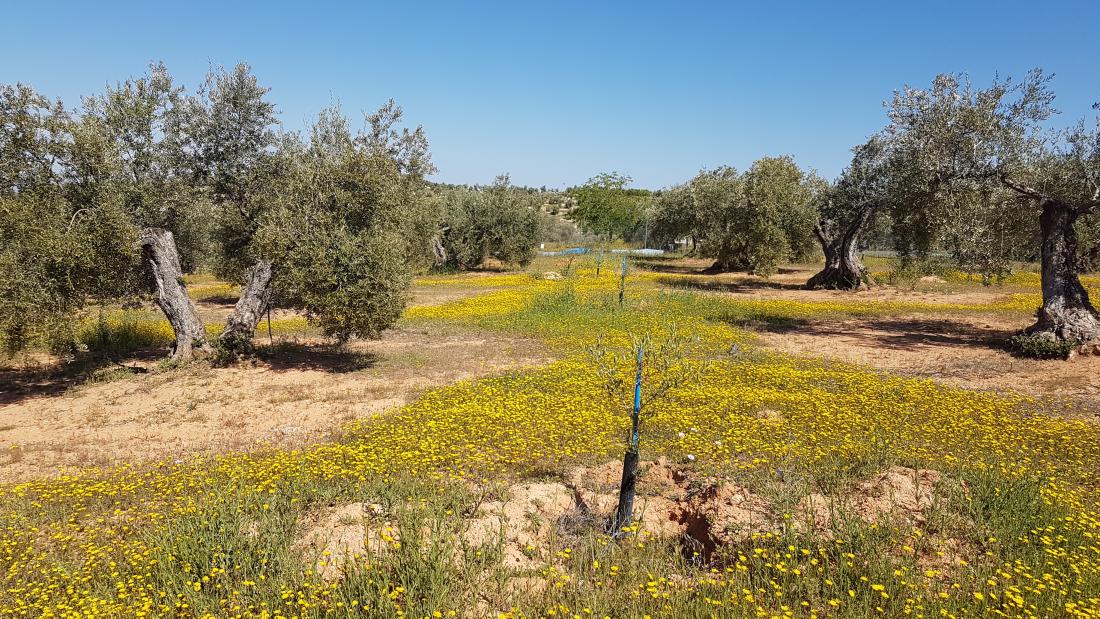ARTOLIO presents: olive tree varieties of Spain

Spain is one of the leading producers of olive oil in the world and, luckily, one of the areas in which ARTOLIO operates. With its warm Mediterranean climate, it is an ideal location for growing olive trees. In fact, they have been a part of Spanish culture for centuries, and have always played an important role in the country's economy.
There are many different varieties of olive trees in Spain, each with their own unique characteristics and flavor profiles. Here are some of the most popular:
-
Picual: The Picual olive tree is the most widely grown olive tree in Spain. It is known for its high yield and is favored by many farmers because of its hardiness and resistance to disease. The Picual olive produces a robust and slightly bitter oil with a fruity flavor.
-
Hojiblanca: The Hojiblanca olive tree is grown primarily in Andalusia, in southern Spain. It produces a delicate and sweet oil with a slightly nutty flavor. The Hojiblanca olive is also used for table olives, as it has a meaty texture and a mild flavor.
-
Arbequina: The Arbequina olive tree is a small and delicate tree that is grown primarily in Catalonia, in northeastern Spain. It produces a sweet and fruity oil with a mild flavor. Like the Hojiblanca, the Arbequina olive is also used for table olives, as it has a small pit and a delicate texture.
-
Cornicabra: The Cornicabra olive tree is grown primarily in the central region of Spain. It produces a robust and slightly bitter oil with a fruity flavor. As a table olive, it has a meaty texture and a slightly sour flavor.
-
Manzanilla: The Manzanilla olive tree is grown primarily in Andalusia, in southern Spain. It produces a mild and slightly sweet oil with a nutty flavor. It has a meaty texture and a slightly salty flavor.
-
Lechín: The Lechín olive tree is grown primarily in the region of Extremadura, in western Spain. It produces a mild and slightly fruity oil with a nutty flavor. Its texture is meaty, and it has a slightly sour flavor to it.
-
Empeltre: The Empeltre olive tree is grown primarily in the region of Aragon, in northeastern Spain. It produces a delicate and slightly fruity oil with a nutty flavor. The Empeltre olive is also used for table olives, as it has a small pit and a delicate texture.
Each variety of olive tree has its own unique characteristics and flavor profile. Some varieties are more suited for oil production, while others are better for table olives. Regardless of the variety, olive trees are an important part of Spain's cultural and economic heritage, and is it makes up for a strong ingredient within the national gastronomy. The production of olive oil and table olives is a major industry in Spain, and the country's olive trees are celebrated for their beauty and resilience.
In addition to being a major producer of olive oil, Spain is also home to many olive oil museums and festivals, the World Olive Oil Exhibition, which ARTOLIO attended last year, being one of them. These events celebrate the history and culture of olive oil production in Spain, and provide visitors with a chance to learn more about the different varieties of olive trees and the many uses of olive oil.
Whether you prefer a robust and slightly bitter oil or a delicate and sweet oil, there is an olive tree variety in Spain that will suit your taste. As one of the world's leading producers of olive oil, Spain's olive trees are an important part of the country's cultural and economic heritage, and are celebrated among the farmers who live there.









